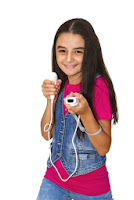Qualitative study
Design and Evaluation of Virtual Reality-Based Therapy Games with Dual Focus on Therapeutic Relevance and User Experience for Children with Cerebral Palsy Ni, L. T., Fehlings, D. & Biddiss, E., Games for Health, 3(3), 2014-07-18
DOI 10.1089/g4h.2014.0003
Link to abstract: online.liebertpub.com/doi/abs/10.1089/g4h.2014.0003 journalCode=g4h
Objective: This qualitative study evaluates two therapist-made Xbox Kinect games, designed for fun, engagement and therapeutic value, for therapeutic relevance and user experience.
Process: Six therapists and eight 8 – 12 year old children (GMFCS I – III) scored questionnaires before and after playing custom Kinect games designed by therapists.
Outcomes: Therapists rated the games as of "average usability" and were able to focus and grade game play. They reported tracking problems (the system had difficulty distinguishing children’s movements from the assisting therapist’s). Children learned to beat the game. The games were "engaging to the child and therapeutically relevant".



